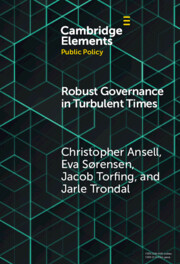Refine search
Actions for selected content:
350 results
Advances in unsteady computational aerodynamics with separation: The 61st Lanchester memorial lecture
-
- Journal:
- The Aeronautical Journal / Volume 129 / Issue 1339 / September 2025
- Published online by Cambridge University Press:
- 19 August 2025, pp. 2355-2382
-
- Article
-
- You have access
- Open access
- HTML
- Export citation
8 - Viscid Hydrodynamics
- from Part II - Additional Topics in (M)HD
-
- Book:
- A First Course in Magnetohydrodynamics
- Published online:
- 05 June 2025
- Print publication:
- 12 June 2025, pp 309-340
-
- Chapter
- Export citation
Turbulent pipe flow of thixotropic fluids
-
- Journal:
- Journal of Fluid Mechanics / Volume 1011 / 25 May 2025
- Published online by Cambridge University Press:
- 16 May 2025, A45
-
- Article
-
- You have access
- Open access
- HTML
- Export citation
Intermittency assessed through a model of kurtosis–skewness relation in MHD in fast dynamo regimes
-
- Journal:
- Journal of Plasma Physics / Volume 91 / Issue 2 / April 2025
- Published online by Cambridge University Press:
- 01 May 2025, E69
-
- Article
-
- You have access
- Open access
- HTML
- Export citation
6 - Internal dynamics from the lens of statistical mixingmeasurements
- from Part 1 - Fundamentals
-
- Book:
- Hydrodynamic Instabilities and Turbulence
- Published online:
- 27 June 2024
- Print publication:
- 19 December 2024, pp 111-134
-
- Chapter
- Export citation
Chapter 2 - The Wind and Its Characteristics
-
- Book:
- Wind Turbines
- Published online:
- 24 January 2025
- Print publication:
- 19 December 2024, pp 13-32
-
- Chapter
- Export citation
Chapter 9 - Siting and Installation
-
- Book:
- Wind Turbines
- Published online:
- 24 January 2025
- Print publication:
- 19 December 2024, pp 214-247
-
- Chapter
- Export citation
7 - Elementary aspects of turbulent flows
- from Part 1 - Fundamentals
-
- Book:
- Hydrodynamic Instabilities and Turbulence
- Published online:
- 27 June 2024
- Print publication:
- 19 December 2024, pp 135-148
-
- Chapter
- Export citation
Okinawa Institute of Science and Technology – Taylor–Couette (OIST-TC): a new experimental set-up to study turbulent Taylor–Couette flow
-
- Journal:
- Flow: Applications of Fluid Mechanics / Volume 4 / 2024
- Published online by Cambridge University Press:
- 13 December 2024, E30
-
- Article
-
- You have access
- Open access
- HTML
- Export citation
7 - Solar Photospheric Events
- from Part II - Astrophysical SOC Phenomena
-
- Book:
- Power Laws in Astrophysics
- Published online:
- 05 December 2024
- Print publication:
- 12 December 2024, pp 106-119
-
- Chapter
- Export citation
3 - Waiting Time Distributions
- from Part I - Fundamentals of SOC
-
- Book:
- Power Laws in Astrophysics
- Published online:
- 05 December 2024
- Print publication:
- 12 December 2024, pp 44-58
-
- Chapter
- Export citation
11 - Solar Wind
- from Part II - Astrophysical SOC Phenomena
-
- Book:
- Power Laws in Astrophysics
- Published online:
- 05 December 2024
- Print publication:
- 12 December 2024, pp 139-146
-
- Chapter
- Export citation
5 - Solar Flare Soft X-Rays
- from Part II - Astrophysical SOC Phenomena
-
- Book:
- Power Laws in Astrophysics
- Published online:
- 05 December 2024
- Print publication:
- 12 December 2024, pp 72-88
-
- Chapter
- Export citation
Properties of magnetic turbulence in GRB afterglows
-
- Journal:
- Publications of the Astronomical Society of Australia / Volume 41 / 2024
- Published online by Cambridge University Press:
- 30 October 2024, e081
-
- Article
- Export citation
Fast monotonically integrated large eddy simulation solver: validation of a new scalable tool to study and optimize indoor ventilation
-
- Journal:
- Flow: Applications of Fluid Mechanics / Volume 4 / 2024
- Published online by Cambridge University Press:
- 25 October 2024, E23
-
- Article
-
- You have access
- Open access
- HTML
- Export citation

Robust Governance in Turbulent Times
-
- Published online:
- 26 April 2024
- Print publication:
- 16 May 2024
-
- Element
-
- You have access
- Open access
- HTML
- Export citation
2 - The Offshore Environment
-
- Book:
- Offshore Wind Energy
- Published online:
- 07 March 2024
- Print publication:
- 14 March 2024, pp 11-76
-
- Chapter
- Export citation
Signature of local (turbulent) dynamo on middle and small scales
-
- Journal:
- Proceedings of the International Astronomical Union / Volume 19 / Issue S365 / December 2023
- Published online by Cambridge University Press:
- 23 December 2024, pp. 261-268
- Print publication:
- December 2023
-
- Article
-
- You have access
- Open access
- Export citation
Near-surface shear layer of solar rotation: origin and significance
-
- Journal:
- Proceedings of the International Astronomical Union / Volume 19 / Issue S365 / December 2023
- Published online by Cambridge University Press:
- 23 December 2024, pp. 54-58
- Print publication:
- December 2023
-
- Article
- Export citation
Effects of rotation and surface forcing on deep stellar convection zones
-
- Journal:
- Proceedings of the International Astronomical Union / Volume 19 / Issue S365 / December 2023
- Published online by Cambridge University Press:
- 23 December 2024, pp. 5-15
- Print publication:
- December 2023
-
- Article
- Export citation














